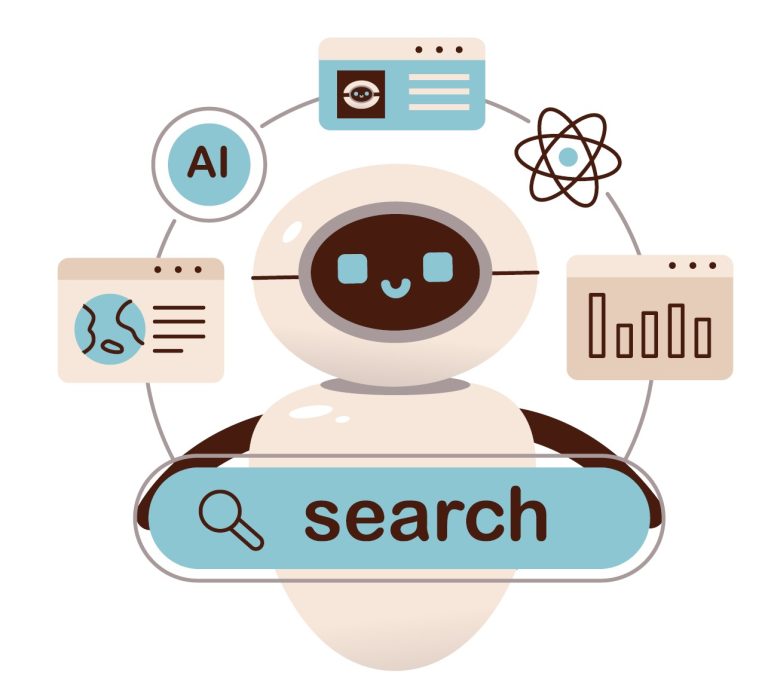In a landscape rapidly transformed by artificial intelligence, the way businesses and candidates search for staffing partners is evolving fast. Traditional search engine optimization (SEO) is no longer the sole path to online visibility. Instead, AI platforms like ChatGPT, Gemini, and others are reshaping how companies get discovered and how authority is established. For staffing firms, adapting to this new environment is critical.
Brian Jameson, Chief Growth Officer and Co-Founder of echogravity, and Pete Newsome, Founding President, 4 Corner Resources and zengig, recently shared insights into what it takes to be found in today’s AI-powered world—and how to turn visibility into growth.
From Blue Links to Direct Answers
The days of relying solely on keyword rankings in search engine result pages (SERPs) are fading. Today, clients and candidates increasingly ask AI tools full, natural-language questions: “Who is the best staffing agency for DevOps engineers in Chicago?” or “How long does it take to fill a data analyst role?” These platforms respond with synthesized answers, often without users clicking on any links.
“You can have the best recruiters and the deepest database, but if you’re not discoverable in the places buyers and candidates trust, you’re out of the running before the race starts,” Jameson explained.
To stand out in these new search environments, firms must aim to be the answer—not just an option among many. That requires visibility not just on Google but within the AI models fueling modern queries.
What AI Looks for: Authority, Clarity, Usefulness
AI models don’t prioritize traditional SEO checklists. Instead, they look for contextually rich, clearly written content that demonstrates authority and provides useful answers.
“Think about your content as a conversation, not a checklist,” Jameson said. “Is it clear? Helpful? Would you be proud to have it quoted in an AI response?”
Content that answers specific questions in a natural tone is favored. For instance, an FAQ section on a service page that addresses hiring timelines, candidate screening methods, or market-specific expertise increases the likelihood of appearing in AI-generated summaries.
Pete Newsome emphasized the power of storytelling to cut through the noise: “There’s so much AI-generated content out there. What it often lacks is personal stories and specific examples. Those are the things that make content stand out.”
Technical Trust Signals Still Matter
While AI favors high-quality, question-based content, technical fundamentals are still critical. Structured formatting, proper schema markup, and fast, mobile-friendly site performance are all “signals” that help AI and search engines trust and elevate your content.
Newsome underscored the importance of not skimping on technical setup. “You can have the best-looking website, but if it’s slow or poorly structured, you’re essentially showing up to a client pitch in sweatpants,” he said.
Reviews, backlinks, and third-party citations are also important credibility indicators. Platforms like Google Business Profiles and review aggregators are easy wins that amplify your authority and reinforce your brand.
Niche Focus Wins
Trying to rank for everything is a losing strategy. The key to visibility is owning your niche. That means doubling down on specific industries, technologies, or geographies where you excel and making sure your expertise is reflected consistently across your content.
“Everyone can say their customer service is great. Everyone can say they have a big database. But if you specialize in placing data engineers for fintech companies, make that clear and consistent everywhere,” said Jameson.
Newsome added, “I didn’t take that advice early on, and it limited us. If you’re trying to be everything to everyone, search engines and AI tools can’t figure out who you are and what you should be found for.”
Updating old content is another powerful tactic. Blogs and pages from previous years can be refreshed to reflect new data and search behavior, giving existing assets new life and improved visibility.
Leveraging AI for More Than Just Visibility
Being found is step one. The real growth lies in converting that visibility into business value. AI tools can accelerate sourcing, screening, and business development in unprecedented ways.
Newsome shared how his firm uses an emerging platform to automate business development. “It identifies job openings, researches hiring managers, scrapes public data, and sends tailored outreach—all without human input. It’s doing things that weren’t even possible six months ago.”
“We used to struggle with no-feedback black holes for candidates. Now, everyone gets contacted immediately. It’s game-changing,” Newsome added.
A New Era of Competitive Advantage
Ultimately, firms that adopt AI and use it thoughtfully, both to increase visibility and improve operational workflows, will lead the pack.
“The recruiter using AI will beat the one who isn’t,” Jameson concluded. “You don’t have to do everything, but you can’t afford to ignore this.”
In a search environment where speed, authority, and relevance determine visibility, staffing firms must shift their digital strategies to stay competitive. Whether optimizing for AI discovery or using it to streamline internal workflows, the message is clear: adapt now, or risk being left behind.
The full webinar is available here.












